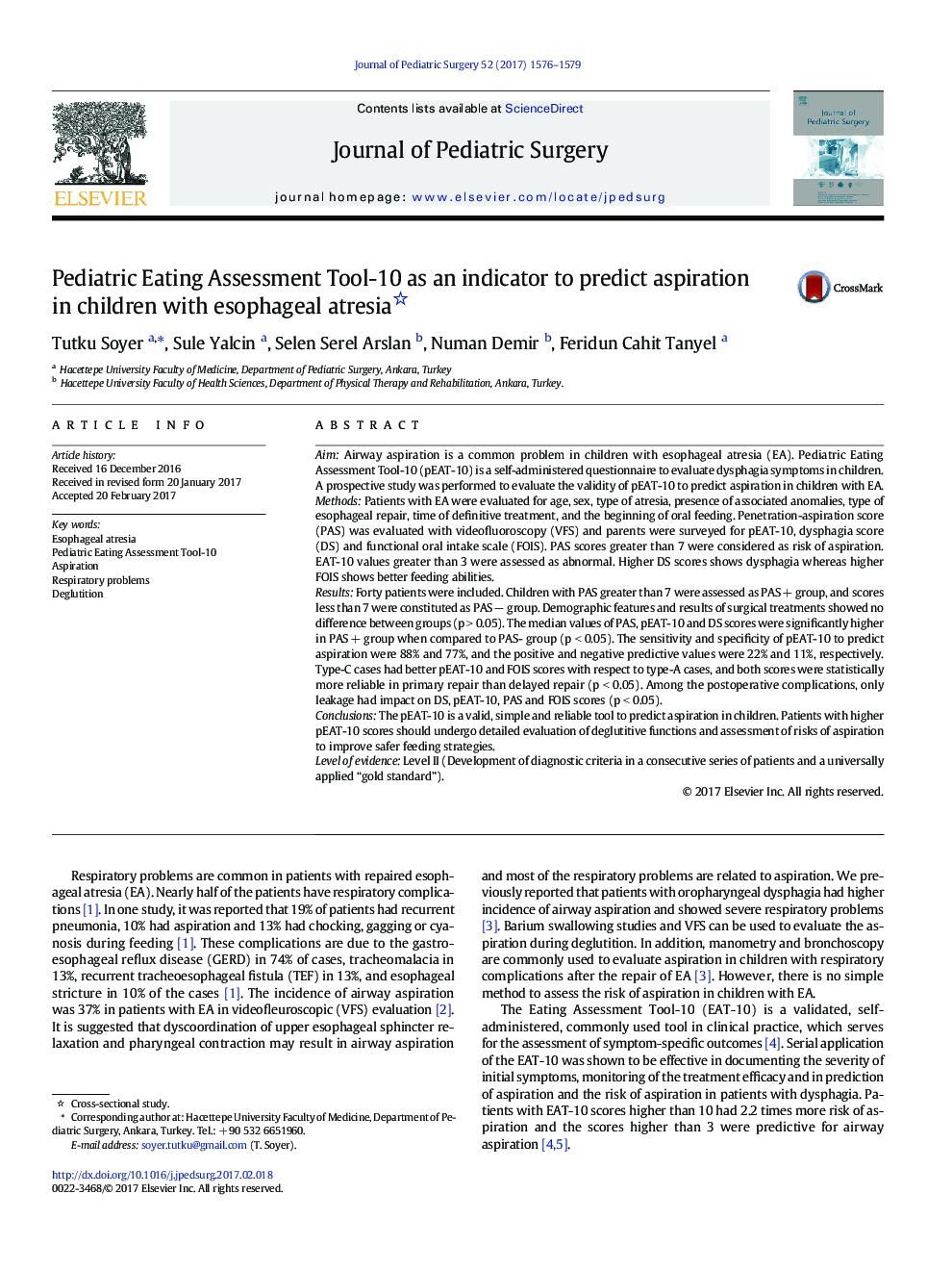| کد مقاله | کد نشریه | سال انتشار | مقاله انگلیسی | نسخه تمام متن |
|---|---|---|---|---|
| 5718061 | 1607092 | 2017 | 4 صفحه PDF | دانلود رایگان |
AimAirway aspiration is a common problem in children with esophageal atresia (EA). Pediatric Eating Assessment Tool-10 (pEAT-10) is a self-administered questionnaire to evaluate dysphagia symptoms in children. A prospective study was performed to evaluate the validity of pEAT-10 to predict aspiration in children with EA.MethodsPatients with EA were evaluated for age, sex, type of atresia, presence of associated anomalies, type of esophageal repair, time of definitive treatment, and the beginning of oral feeding. Penetration-aspiration score (PAS) was evaluated with videofluoroscopy (VFS) and parents were surveyed for pEAT-10, dysphagia score (DS) and functional oral intake scale (FOIS). PAS scores greater than 7 were considered as risk of aspiration. EAT-10 values greater than 3 were assessed as abnormal. Higher DS scores shows dysphagia whereas higher FOIS shows better feeding abilities.ResultsForty patients were included. Children with PAS greater than 7 were assessed as PAS + group, and scores less than 7 were constituted as PAS â group. Demographic features and results of surgical treatments showed no difference between groups (p > 0.05). The median values of PAS, pEAT-10 and DS scores were significantly higher in PAS + group when compared to PAS- group (p < 0.05). The sensitivity and specificity of pEAT-10 to predict aspiration were 88% and 77%, and the positive and negative predictive values were 22% and 11%, respectively. Type-C cases had better pEAT-10 and FOIS scores with respect to type-A cases, and both scores were statistically more reliable in primary repair than delayed repair (p < 0.05). Among the postoperative complications, only leakage had impact on DS, pEAT-10, PAS and FOIS scores (p < 0.05).ConclusionsThe pEAT-10 is a valid, simple and reliable tool to predict aspiration in children. Patients with higher pEAT-10 scores should undergo detailed evaluation of deglutitive functions and assessment of risks of aspiration to improve safer feeding strategies.Level of evidenceLevel II (Development of diagnostic criteria in a consecutive series of patients and a universally applied “gold standard”).
Journal: Journal of Pediatric Surgery - Volume 52, Issue 10, October 2017, Pages 1576-1579
